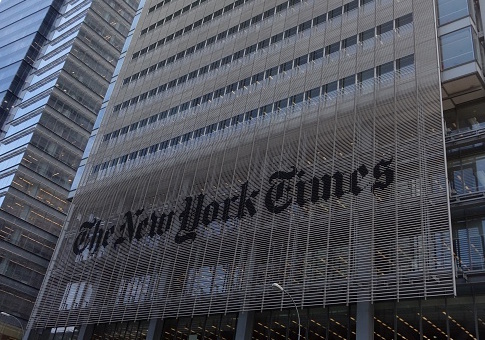The cartoonist behind an anti-Semitic cartoon printed in the New York Times blamed "the Jewish propaganda machine" Wednesday for the outraged response.
António Moreira Antunes, who drew the cartoon, spoke with CNN about the scandal. He claimed the response to the cartoon was "made through the Jewish propaganda machine, which is, anytime there's criticism it's because there's someone anti-Semitic on the other side, and that's not the case."
His cartoon, which the New York Times initially called an "error of judgement" before offering an apology for its publication, appeared in the international edition of the paper.
It featured Israeli Prime Minister Benjamin Netanyahu, portrayed as a dachshund with a Star of David collar, leading President Donald Trump, portrayed as a blind Jewish man wearing a yarmulke.
"We are deeply sorry for the publication of an anti-Semitic political cartoon last Thursday in the print edition of The New York Times," a statement from the Gray Lady read.
Antunes told CNN he did not believe the cartoon was anti-Semitic, but major non-partisan Jewish organizations disagreed. Antunes claimed right-wing Jews use charges of anti-Semitism to insulate themselves from criticism.
"The Jewish right doesn't want to be criticized," he said. "Therefore, when criticized they say, 'We are a persecuted people, we suffered a lot... this is anti-Semitism.'"
Antunes, who is Portuguese, first had the cartoon published in a Lisbon paper. Antunes described himself as having the "utmost respect" for Jews. He has previously compared Israeli soldiers to Nazis and drawn several cartoons taking aim at Israel.
According to a story published in the New York Times Sunday, the image came from an automated feed of cartoons submitted for inclusion in the international edition of the paper. Editors for the New York Times said they need to "sporadically review the feed and remove work that is biased or racist."
The provider of that menu defended the image but said he respected the decision to remove it from circulation.
A New York Times reporter told CNN the cartoon's publication was a "self-inflicted wound" by the self-styled paper of record.
